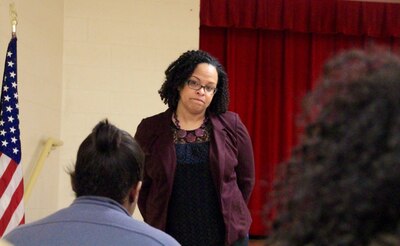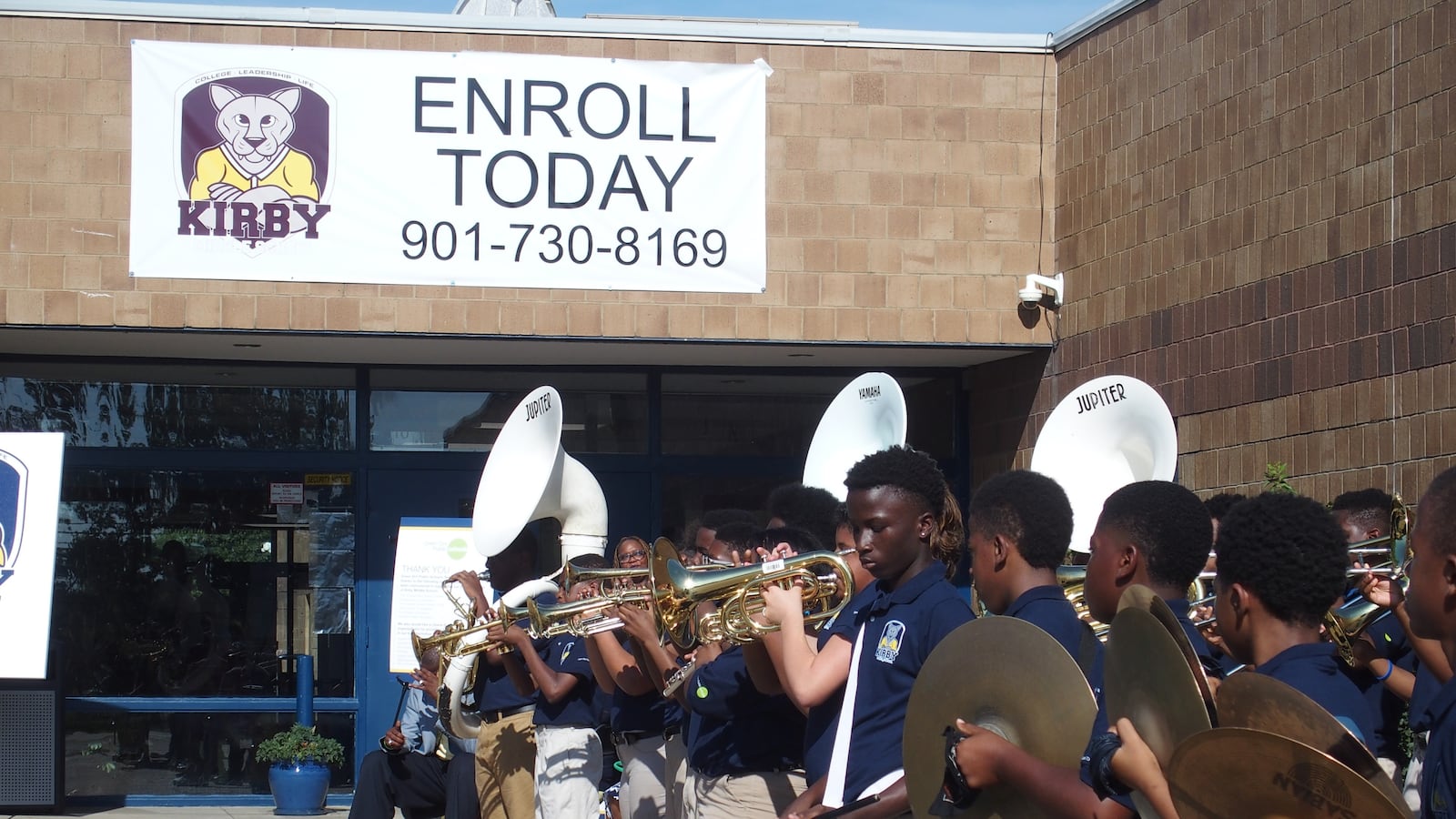When leaders of Gestalt announced they were backing out of running two Memphis schools in Tennessee’s turnaround district, they pinned the decision on low enrollment — and some charter operators were quick to paint the problem as unique.
Then KIPP told the same story a month later when it announced plans to exit University Middle, another Memphis school in the state’s Achievement School District.
“Due in large part to its remote location in Southwest Memphis, KIPP Memphis University Middle has been under enrolled since it opened in the summer of 2014,” KIPP leaders said in a statement last December.
But the two charter operators hardly faced unusual enrollment pressure. A Chalkbeat analysis found half of the ASD’s 33 schools have faced deep enrollment challenges.
Seventeen schools — 15 in Memphis and two in Nashville — enroll fewer than 70 percent of the students they were designed to serve. Fifteen of the ASD’s 25 takeovers also have fewer students today than when they were controlled by the local district.
The findings suggest that overhauling struggling schools by giving them new management, the ASD’s high-stakes turnaround strategy, does little to counteract local demographic pressure. Across much of Memphis, home to the bulk of the ASD’s work, the school-age population has been falling for years.
“The cloud over the work in Memphis is there are too many buildings for the number of students,” said Bobby S. White, the ASD’s chief of external affairs. He noted that Shelby County Schools faces similar challenges.
But that realization was still in the future in 2011, when the ASD was laying the groundwork to take over its first low-performing schools and assigning them to charter operators who promised to boost test scores dramatically.
At the time, the assumption was that improving a school would draw more neighborhood families to enroll. But that has happened in only about 40 percent of the ASD’s schools in Memphis. Most have seen their enrollment decline.
At Westside Achievement Middle School, for example, the number of students dropped from 535 to 339 after its takeover in 2012 as part of the ASD’s first portfolio of schools.
The trend was the same at Wooddale Middle, which has gone from 714 to 473 students in the two years that the school has been under management by Green Dot Public Schools.
The outlook was better at Memphis Scholars’ Florida-Kansas Elementary School, which has had a slight increase in enrollment since 2014, the last year of local governance by Shelby County Schools. Even so, the elementary school is operating at just 40 percent capacity.

ASD officials say they are paying closer attention to the school-age population in Memphis. They now plan to scrutinize enrollment projections when charter operators submit their budgets, with an eye toward census data and neighborhood housing trends. They also have a clear message for operators: “Don’t bank on a huge enrollment growth to sustain your model,” White said.
Charter operators are generally accustomed to recruiting students from across school zones. But in Tennessee, the challenges posed by demographic shifts have been exacerbated by strict enrollment rules for the ASD’s schools and turf battles with the local district.
State law limits to 25 percent the number of students who can come from outside their neighborhood to an ASD school. Until 2015, the schools weren’t allowed to admit any out-of-neighborhood students, while schools run by Shelby County Schools can accept students from anywhere in the district if they have extra space.
Allison Leslie, superintendent for Aspire Public Schools in Memphis, said her schools could attract more students if the state allowed them to.
“That is limiting for us, something I would like to see change,” she said about enrollment restrictions under state law. “Students and families in Memphis should be able to select whatever school they want to attend in Memphis. Currently it is really confusing for families based on the enrollment restrictions that exist for ASD schools specifically.”
ASD schools aren’t the only ones fighting for students. In the last five years, Shelby County Schools has closed 20 under-enrolled schools, and the district plans to shutter more in the near future. Low enrollment is spottier in Nashville, where the city’s population is booming.
Shelby County Schools hasn’t taken the ASD’s expansion in Memphis lying down. In recent years, the local district has aggressively recruited and rezoned to stem the tide of students and funding moving to the state-run district. In the most high-profile case, an entire school was reconfigured to retain students bound for the ASD. Charter operators, including Gestalt, also have complained that the local district withheld student information, hampering their efforts to sign kids up.
“I think what ASD operators have faced is being the new kids on the block in their mission to serve those neighborhood schools,” White said. “They have essentially had to build out from scratch in terms of communication with students and building community partnerships that assist in family and student outreach.”
Enrollment challenges in Memphis shouldn’t have been a surprise to charter operators, according to Dirk Tillotson, founder of Great School Choices, which supports community-based charter school development.
“That is something that is fairly predictable,” said Tillotson, who is based in Oakland, Calif., another urban school district with declining enrollment. “You’ve got to be financially sustainable in this work. If you don’t get that basic step down, you won’t be able to serve your kids.”
Below are two tables detailing enrollment at the ASD’s 33 schools. The first compares each school’s 2016-17 enrollment to its “programmatic capacity,” or the number of students that academic programs were designed to serve.
The second table compares enrollment this year to enrollment before their ASD takeover. Schools that were not takeovers but started from scratch are noted as “new starts.”
ASD enrollment and capacity
Change in ASD enrollment since takeover
*Three campuses within the ASD house two schools. For purposes of these tables, their enrollment figures are combined.
** Libertas is still phasing in grades at the elementary school. Currently, the school serves preK-2nd grade.

